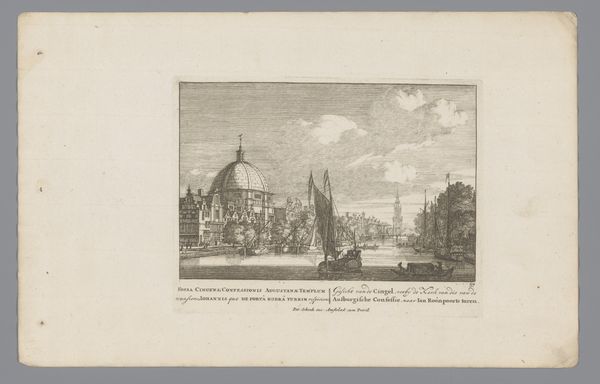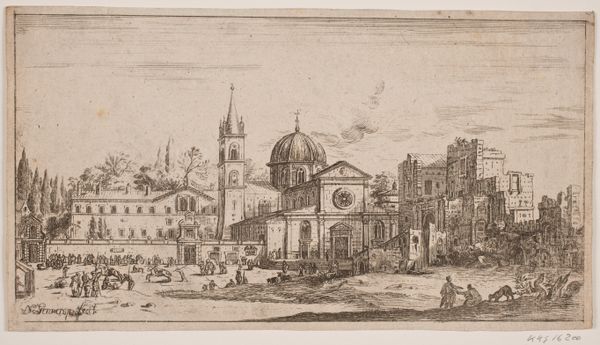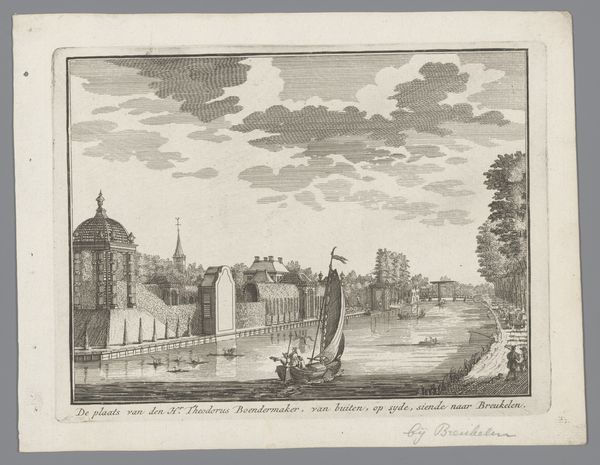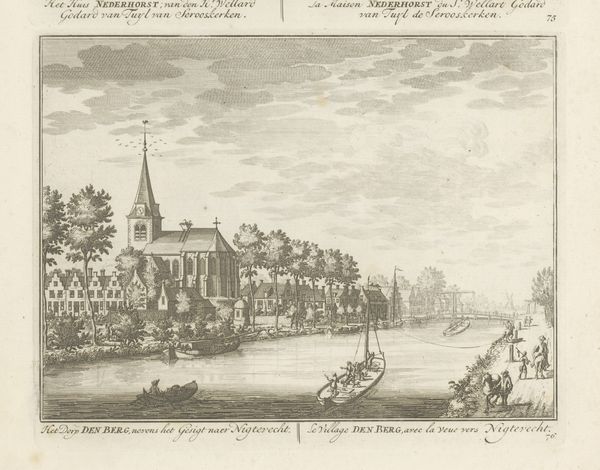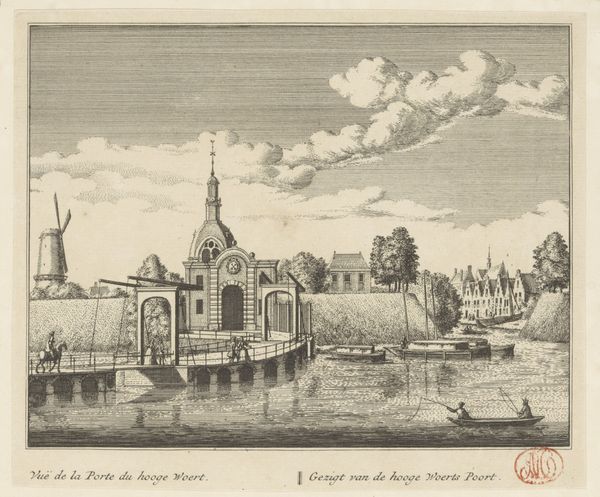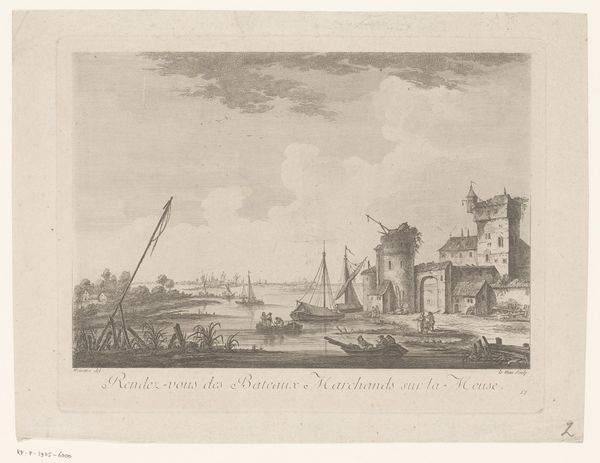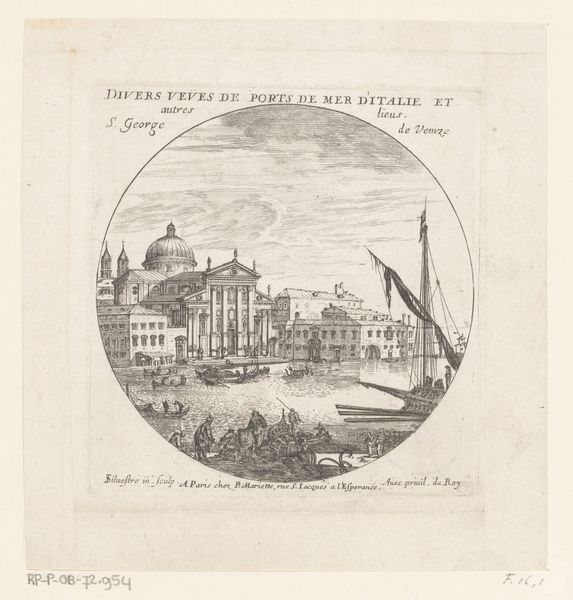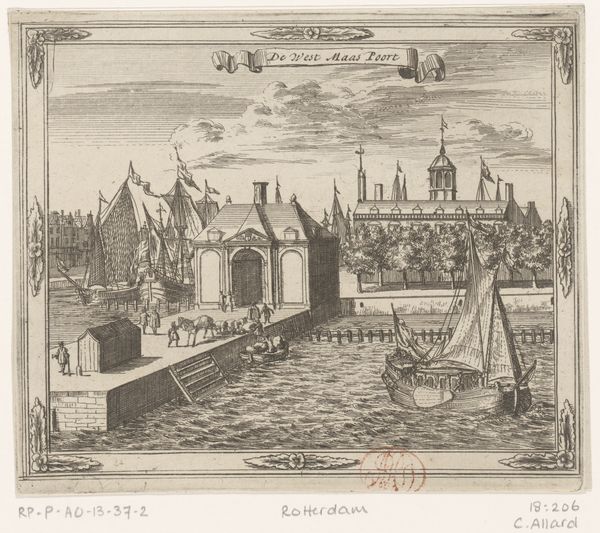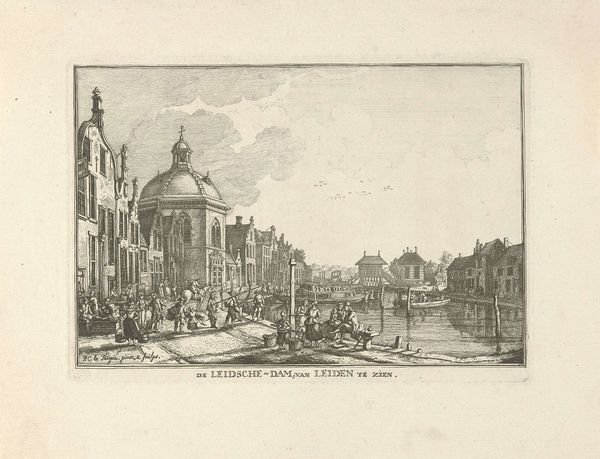
print, engraving
#
baroque
#
dutch-golden-age
# print
#
landscape
#
cityscape
#
engraving
Dimensions: height 170 mm, width 205 mm
Copyright: Rijks Museum: Open Domain
Curator: Ah, there's something about old cityscapes that just gets me. Editor: I agree, especially when they reveal so much about power structures. Take this engraving, “Gezicht op de Singel,” or “View of the Singel,” created sometime between 1680 and 1700 by Carel Allard. Curator: Right? At first glance, it’s just this beautiful, tranquil canal scene, full of boats and this absolutely massive domed building. It looks almost like an alien spaceship landed in Amsterdam. The light is just so delicate. Editor: That "spaceship," as you so poetically put it, is likely the Lutheran church. Consider the backdrop: the Dutch Golden Age, burgeoning trade, and religious reformation intertwining to create a complex, tolerant… but also stratified society. Look at how the church looms—an imposing presence that speaks to the shifting religious landscape. Curator: I see what you mean. It's a real statement piece. It practically dwarves the regular houses along the canal, which are, admittedly, pretty charming in their own right. But it still gives me a sense of peace, all that stillness. Almost like a photograph somehow, a captured moment. Editor: "Stillness," yes, but it's a constructed stillness. The artist chose to depict this view, foregrounding particular elements—the boats that represent trade, the church that signifies religious power, and a canal, which symbolizes wealth. Curator: It does give you pause, doesn’t it? Thinking about all the things unseen, the people working behind the scenes in those grand buildings, what they were actually experiencing... the secrets and dramas along those waterways. It makes history feel, well, messy and real. Editor: Exactly! It is a constructed image, an artifact that encapsulates a specific point in time, reflecting particular values and perspectives that were meant to uphold existing dynamics of inequality. Art isn’t just beautiful; it actively participates in power relations. Curator: So true, so true. It gets under your skin and plants these seeds of questions, like little artistic activists, demanding you wake up and smell the historical complexities. Editor: Well put! It reminds us to interrogate the stories we tell ourselves about the past.
Comments
No comments
Be the first to comment and join the conversation on the ultimate creative platform.
